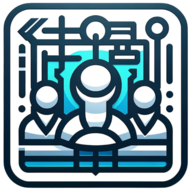How Do You Prioritize Features During the Design Process?
In the intricate dance of feature prioritization within UX design, we've gathered insights starting from a CEO's perspective on understanding user needs and goals. Alongside expert voices, we've also compiled additional answers that delve into the practical strategies and real-world impacts of prioritization. From leveraging weighted scoring systems to analyzing user interaction data, explore the multifaceted approaches that shape exceptional user experiences.
- Understand User Needs and Goals
- Align Features with Market Demands
- Use Value Versus Complexity Quadrant
- Implement Weighted Scoring for Decisions
- Incorporate Stakeholder Feedback
- Analyze User Interaction Data
Understand User Needs and Goals
Prioritizing features during the design process involves several key steps to ensure that the most valuable and impactful features are addressed first. Here's how I typically approach it:
1. Understanding User Needs:
Typically, we'll hold external meetings with the stakeholders (our client) since they hear firsthand their customers' pain points. We may also conduct user interviews to get firsthand knowledge of what users are looking for and what's causing them problems.
2. Aligning with Client's Business Goals:
Remember, your goal as a UI/UX designer is to ensure that the features align with the overall business objectives and strategies. You're there to elevate their products and services.
3. Evaluating Technical Feasibility:
As a designer, sometimes we have great ideas that the client's dev team can't pull off. So, communication is key to make sure what you come up with can be deployed with the resources they have at their disposal. Budget plays a big part in this.
In a previous project for a SaaS product, The Skins Factory's UI/UX design team faced a situation where there were several feature requests from both users and stakeholders. The initial plan was to include all requested features in the first release. However, after prioritizing based on user needs and business goals, the team decided to focus on core functionalities that would deliver the highest value and address critical pain points.
Remember, application design is an iterative process. You don't have to include all of your ideas as you come up with them. Every new idea has to be designed, then coded, and that takes time and money.
Align Features with Market Demands
Prioritizing features in product design often starts with gathering data on what the market requires. This means diving deep into market research to understand consumer needs and industry trends. Uncovering insights like these enables a designer to rank features by their potential to satisfy market demands.
By assigning priority to features that align closely with these insights, the product is more likely to resonate with its intended audience. Make sure to thoroughly investigate market trends and place the features that align with them at the top of your list.
Use Value Versus Complexity Quadrant
Another effective method for determining feature importance is to use a value versus complexity quadrant. This approach involves evaluating how much value each feature adds to the product against how complex it is to implement. Features that offer high value with low complexity are often prioritized, as they can provide significant benefits without requiring extensive resources.
It's important to strike a balance, ensuring that the product offers substantial value without overextending the development timeline. Start mapping out your features on a value-complexity quadrant to visualize where each one falls and prioritize accordingly.
Implement Weighted Scoring for Decisions
Weighted scoring can be an invaluable tool for making informed design decisions. This method assigns scores to various aspects of each feature, such as user impact, business value, and implementation feasibility. The sum of these scores gives each feature a composite weight that reflects its overall importance.
This system helps clarify which features will contribute most to the product's success, allowing for a data-driven prioritization process. Don't hesitate to set up a weighted scoring system for a strategic approach to feature prioritization.
Incorporate Stakeholder Feedback
Taking into account the opinions and feedback of stakeholders is crucial in feature prioritization. Engaging in discussions with them helps to surface diverse perspectives and align feature priorities with both user expectations and business objectives. This collaborative effort ensures that the most critical and relevant features are elevated in the development queue.
It's essential to have a shared agreement on what needs to be built first. Reach out to your stakeholders, gather their input, and let that guide your prioritization choices.
Analyze User Interaction Data
Analyzing how users interact with a product provides direct insight into which features are most engaging and necessary. Deploying analytics tools to monitor user behavior helps identify patterns and trends that can inform feature prioritization. If certain features are heavily used or elicit positive responses, they become prime candidates for continued development and refinement.
By contrast, features with low user engagement might be deprioritized. Leverage user behavior analytics to make data-driven decisions about which features deserve your focus next.


